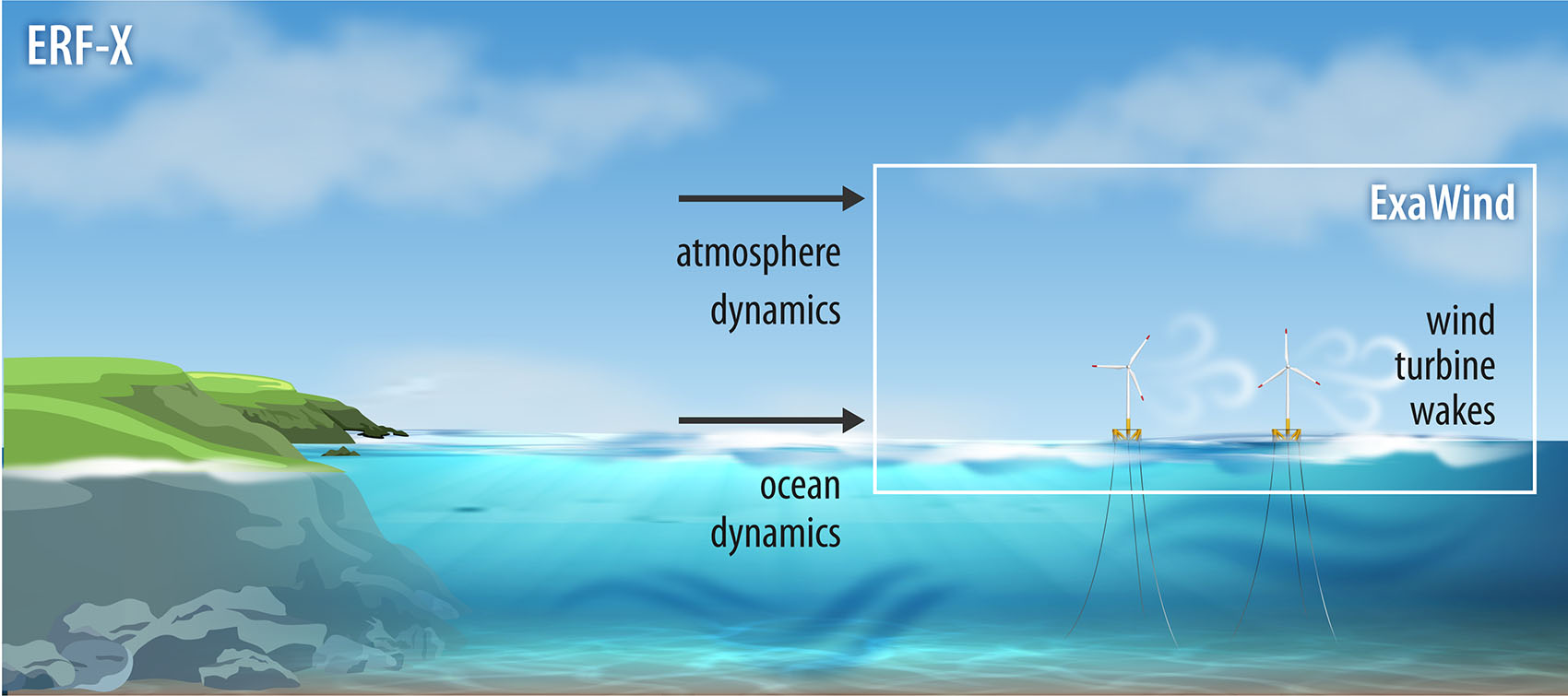Energy Research and Forecasting Model
The Energy Research and Forecasting (ERF) Model is a new solver for predicting mesoscale and microscale dynamics in the atmosphere, designed for emerging high-performance computing architectures.

AMR—Wind predicts detailed wind profiles near and around the wind turbines, while ERF is used to provide relatively far-field boundary conditions.
The ability to accurately predict wind flow through a wind plant depends on accurate prediction of the atmosphere at larger scales, but existing mesoscale atmospheric solvers are not targeted to this application and were not designed to run on the latest high-performance computing platforms.
ERF is a new tool built on the AMReX library, which provides capability for adaptive mesh refinement and a performance-portable software infrastructure. It is a numerical weather model that has been developed to characterize the flow fields that determine how much energy can be extracted by wind turbines and to serve as a testbed for exploration of new physical submodels and numerical strategies for this purpose.
ERF will enable accurate weather predictions that can be used to improve siting and operations of new wind plants, both on shore and offshore. ERF is designed to interface directly with other wind energy simulation tools being developed at NREL, including AMR-Wind and the rest of the ExaWind software stack.
Download ERF Codes
The software suite can be accessed via a GitHub repo.
Publications
ERF: Energy Research and Forecasting, The Journal of Open-Source Software (2023)
Contacts
Share

